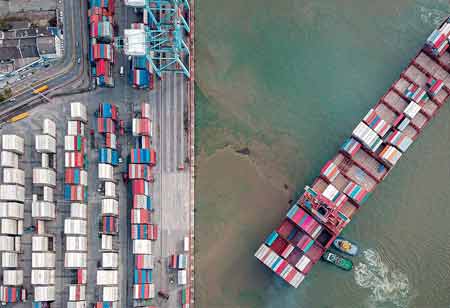THANK YOU FOR SUBSCRIBING
THANK YOU FOR SUBSCRIBING

By
Logistics Transportation Review | Friday, April 11, 2025
Stay ahead of the industry with exclusive feature stories on the top companies, expert insights and the latest news delivered straight to your inbox. Subscribe today.
When many forms of transportation are centralized under one logistics company or carrier, multimodal transportation offers efficiency and coordination in freight forwarding and logistics.
Fremont, CA: On the other hand, intermodal transportation shares accountability; at each transport junction, a new logistics business assumes control, reflecting the variety of transport modes engaged in the shipment process. Although it is impossible for one organization to manage the complete road, rail, and sea voyage, multimodal transportation offers a viable alternative.
The Synchronization Challenge
Intermodal freight transport requires the synchronization of transshipment locations, ports, terminals, and stations for smooth cargo transitions. Punctuality is determined by weather, vessel space, container availability, and unanticipated events. Drayage services are essential to guarantee cargo container movement and readiness for intermodal transportation phases.
Drayage Services: The Logistics Industry's Silent Heroes
Drayage services are essential to maintaining regulatory compliance, logistical standards, and the efficient transfer of goods from one transshipment point to another. In order to ensure safe and tracked shipments, drayage carriers move cargo from a ship to a warehouse for examinations and storage before sending it to the next mode of transportation.
A Spectrum of Drayage Solutions
Drayage services are available in various forms to meet the diverse needs of intermodal transportation. These include door-to-door, pier, expediting, inter-carrier, intra-carrier, and shuttle services. Door-to-door services ensure cargo is transported directly to the recipient's doorstep. Pier drayage focuses on sea transport, moving goods from rail stations to piers. Expedited shipments are fast-tracked to keep pace with intermodal schedules. Inter-carrier drayage involves shifting cargo between carriers within a city, while intra-carrier drayage keeps the carrier constant throughout the shipment route. Shuttle drayage is crucial for temporary storage at transportation hubs.
Practical Applications of Drayage in Intermodal Shipping
Drayage services are essential in intermodal shipping because they handle logistical issues such as carrier agreements and container overflow. They follow stringent terms of engagement and guarantee cargo security and timeliness. Drayage services are also essential to last-mile road delivery and maritime transportation, and as the logistics industry develops, so will their integration, ushering in a new era of dependable and efficient cargo transit.
I agree We use cookies on this website to enhance your user experience. By clicking any link on this page you are giving your consent for us to set cookies. More info





